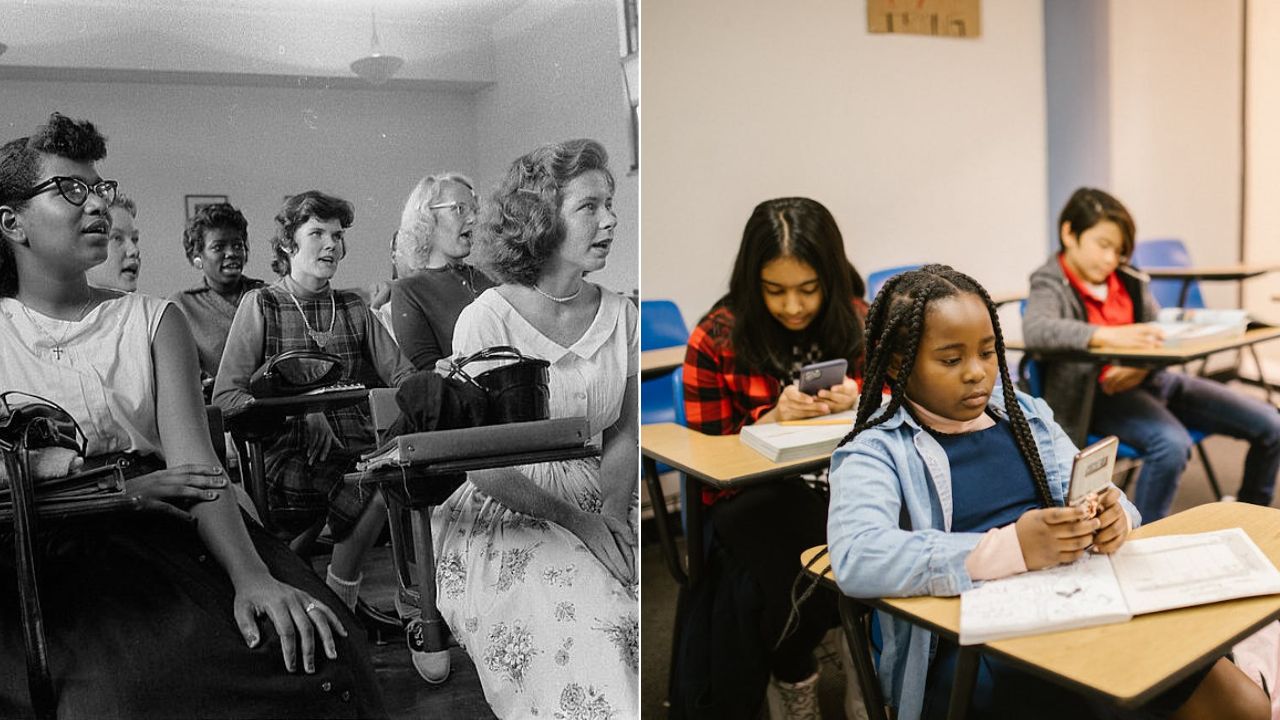High school is still lockers, lunch, and trying to figure out who you are, but the world around those halls has changed a lot since the ’90s. Back then, most teens had landlines, thick textbooks, and after-school plans made at the payphone.
Today, Gen Z carries a full internet in their pockets, learns on laptops, and builds social lives that keep buzzing long after the final bell. The result is a school experience that feels faster, louder, and more complicated. This article looks at what changed, why it matters, and how to make modern high school feel more manageable without wishing for a time machine.
From Analog Hallways to Always Online Life
The biggest shift is obvious the moment you walk into any classroom. In the ’90s, teachers used overhead projectors and stacks of handouts. Notes were passed on paper, and if you missed a class you borrowed a spiral notebook from a friend. Today, assignments live in Google Classroom, deadlines ping your phone, and group projects happen on shared docs you can edit from anywhere. That convenience changes how school feels. You have instant access to information, but you also have constant reminders and fewer natural breaks. Social life changed too. The ’90s version of drama ended when you got on the bus. Now, notifications follow you home, and one awkward moment can turn into a group chat in seconds.
The Tech Shift You Live In
Chromebooks, learning portals, and video lessons make school more flexible and personalized. They also mean multitasking temptations, more screen time, and new rules about devices. The skill now is not just learning, but learning to focus when everything competes for attention.
The Social Shift That Never Sleeps
Friendships, clubs, and hobbies are visible online, which can be inspiring and stressful at the same time. It is easy to find your people. It is also easy to compare your life to a highlight reel and feel like you are falling behind.
Why the Pressure Hits Differently
Teens in the ’90s worried about grades, cliques, and getting into college, but the scoreboard looked simpler. Today, there are more ways to keep score. You see test scores as they post, likes as they rise, and acceptance letters as they drop on your feed. Colleges talk about “holistic” applications while expecting AP classes, activities, and community impact. That mix creates pressure that creeps into every part of your day, not just the hours you are in class.
Academics and Admissions
Course catalogs have expanded with AP, IB, dual enrollment, and coding electives. That is great for choice, yet it is easy to feel like you should do everything to stay competitive. Some schools use block schedules and standards-based grading, others still use traditional periods and GPAs, and test-optional policies add another layer to decisions. It can feel like everyone else has a perfect plan, even though most students are figuring it out step by step.
Safety, Health, and Mental Load
Lockdown drills, campus IDs, and security cameras are normal now. The pandemic added remote learning, learning gaps, and new expectations around attendance and make-up work. Schools offer more counseling and wellness programs, but the line between school life and real life is thinner. Worry does not stop at the door, and that takes energy you could be using to learn or just breathe.
Inside the Classroom: How Learning Looks Now

Walk into a class today and you will see a mix of mini-lectures, online modules, quick formative quizzes, and group work. Many teachers assign fewer giant essays and more checkpoints to show your process. That helps you build skills and ask for help earlier. It also means you manage multiple small deadlines instead of one big one, which can feel like constant motion. The good news is that classrooms are more interactive, and you have more ways to show what you know. The challenge is staying organized when everything lives on a screen.
Tools, Grades, and What Counts
In the ’90s, a missing handout could tank your week. Now the material is always available, which shifts the focus from finding information to making sense of it. Rubrics are clearer, feedback is faster, and late-work policies are more explicit. You are evaluated on thinking, collaboration, and communication as much as on memorizing facts.
Assignments, AI, and Participation
Many classes now expect drafts, reflections, and citations that explain your choices. AI tools exist, and schools respond with new guidelines, originality checks, and assignments that require your voice. Participation has expanded too. Speaking in class still matters, but so do digital discussion boards, peer comments, and creative formats that let quieter students shine.
Culture, Identity, and Community on Campus
One big difference you will notice is how visible identity and culture are at school. There are more clubs, more celebrations, and more language to talk about who you are. That does not mean every campus is perfect, but it does mean students have more spaces to belong. At the same time, community standards are changing. Dress codes look different, phone policies shift from class to class, and social media blurs the line between school conduct and personal life. You have more freedom to express yourself, and more responsibility for how you do it.
More Visibility and Support
Student groups focused on culture, faith, gender, and advocacy are common. Guidance offices often include college advising and mental health resources. You will find peer tutoring, wellness rooms, and staff trained to listen when stress spikes.
New Rules, New Friction
With phones, vaping sensors, and attendance trackers, schools set boundaries that can feel strict. Some rules protect learning and safety. Others spark debate. Learning how to navigate those conversations respectfully is part of modern school life.
What Helps Gen Z Thrive Right Now

This era asks for a different playbook. You do not need to live like it is 1997 to feel better. You need routines that work in a world that never really powers down. Think of these as small switches that reduce noise and raise your energy.
Daily Habits That Work
Use a simple weekly plan instead of relying on memory or late-night sprints. Batch screen-heavy tasks, then take short phone-free breaks to reset your focus. Keep school apps on your home screen and social apps in a folder to reduce automatic taps. Sleep is still the best academic boost you can give yourself, and a short walk or snack does more for your brain than another scroll.
Mindset and Support Systems
Ask teachers to clarify priorities when everything feels urgent. Pick a few activities you genuinely enjoy instead of collecting clubs for a line on an application. Treat friends as teammates, not competitors, and set group chat quiet hours before big days. If anxiety sticks, talk to an adult you trust early. Getting help is a strength, not a setback.
Different Era, Same Goal
High school in the ’90s was slower, quieter, and more offline. High school for Gen Z is connected, customizable, and crowded with choices. That difference explains why your days feel full even when your schedule looks normal on paper. The tools are new, the expectations are wider, and the conversation never fully stops. What has not changed is the purpose. School is still where you learn how to think, how to manage yourself, and how to build a life that fits who you are. If you focus on a few good habits, ask for help when you need it, and choose depth over constant noise, modern high school becomes less of a blur and more of a launchpad.


